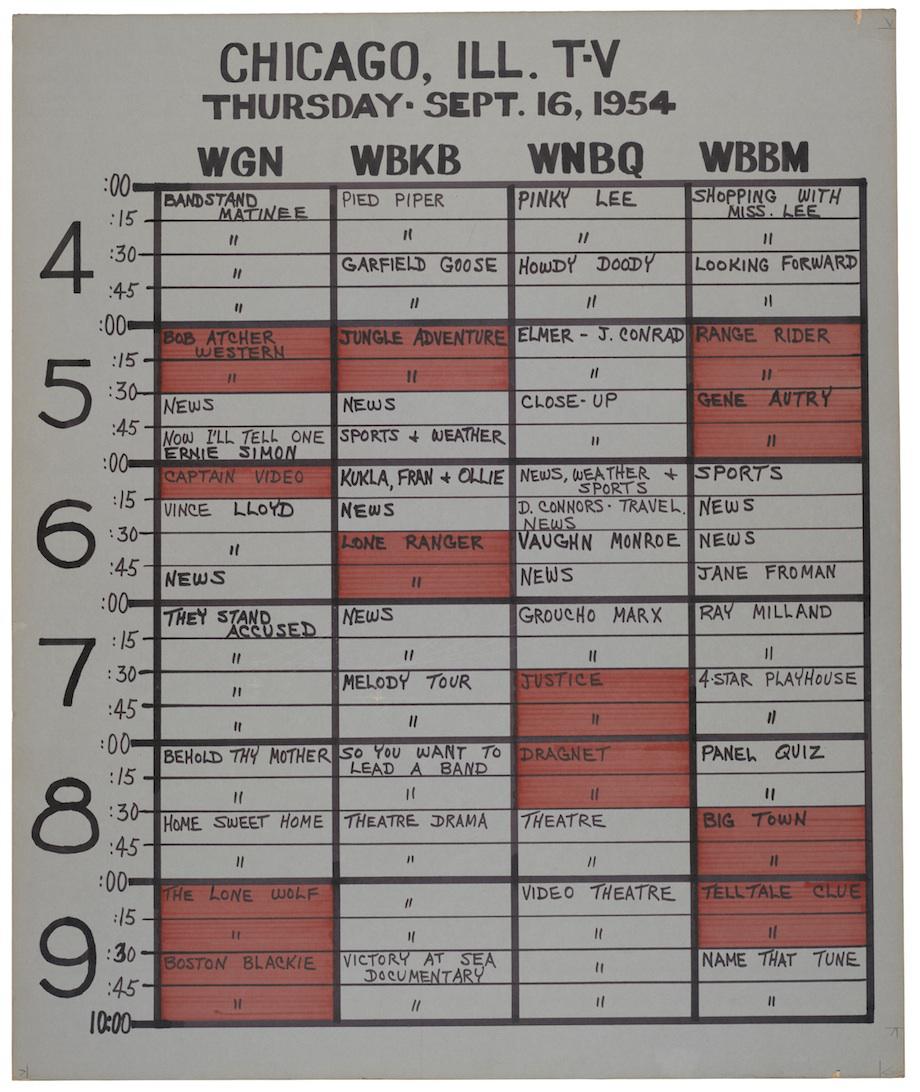The Vault is Slate’s history blog. Like us on Facebook, follow us on Twitter @slatevault, and find us on Tumblr. Find out more about what this space is all about here.
This chart was used in Senate hearings on television and violence held in October 1954. It shows a day’s television programming in Chicago, and highlights in red the programs with plots centering on crime and criminals. (Here’s another chart using the same color-coding to illustrate programs aired in Washington, D.C., during a sample week.)
These early hearings on TV violence were held during a period of rapid adoption. In 1946, 6,000 homes had television sets; by 1955, TV could be found in one half of American households. While this chart may look humble to us when compared to our endlessly scrolling cable menus, this slate of programming represents a huge growth in entertainment options in a very short time.
Historian James Gilbert has written that 1950s Americans asked about the public problems that worried them most ranked juvenile delinquency second (Communism came first). The Senate Special Subcommittee on Juvenile Delinquency, formed in 1953, was a response to (and a reinforcement of?) these public fears. The subcommittee, which is probably most famous for the 1954 hearings that led to the Comics Code, met to discuss television violence in 1954 and 1955.
Communications historian Keisha L. Hoerrner writes that these hearings focused on crime shows, Westerns, and other action-oriented shows. The shows coded red on this chart star cowboys, space “rangers,” and plenty of police detectives. Even if the criminals on these shows were punished—and, given the industry’s self-imposed code, they always were—parents feared that a constant emphasis on crime and conflict would turn children’s minds toward wrongdoing.
Representatives from the major networks appeared at the 1954 hearings to protest that their own self-regulation was already effective enough. The hearings resulted in no legislation. The subcommittee called instead for more research, and for networks to employ child “testers” to try out programs before airing them.

National Archives.